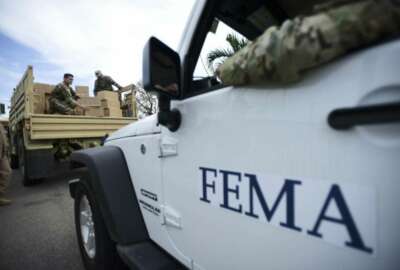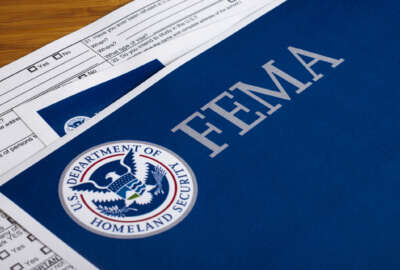
‘We have a way to go and a lot to do,’ FEMA administrator says of culture improvement efforts
The initiatives FEMA began over the course of the last 18 months to address harassment, discrimination and employee engagement challenges in the workforce will...
FEMA’s top leader believes the efforts the agency has taken over the last year or so have begun to address long-simmering issues with employee engagement, harassment and discrimination in the workforce.
But it hasn’t nearly eradicated those challenges.
The agency hired the RAND Corporation to survey its workforce about their experiences with discrimination and harassment. The survey, which RAND published last week, revealed one in five FEMA employees had experienced some kind of racial harassment or discrimination on the job in recent years.
Sexual harassment was less common in the workplace than gender-based or sexist behavior, and FEMA employees were often hesitant to report violations. Those who did report were often less than satisfied with the outcome.
FEMA initiated the RAND survey back in 2018, when the agency discovered a series of sexual harassment and discrimination allegations involving one of its former senior executives.
“This has not happened overnight,” FEMA Administrator Peter Gaynor said in an interview with Federal News Network. “It predates the leadership that’s in place today, and really it’s a lack of accountability by senior executives who allowed the behavior to continue for far too long.”
Gaynor said FEMA initiated the survey with RAND, which he hopes shows the agency has taken these challenges seriously.
“The report was well-needed,” he said. “And sometimes some of those reports are painful to read. But from my point of view no matter where the problem was created, I own it. I own the good and the bad here at FEMA, and it’s my job to take that information and to correct it.”
FEMA developed a culture improvement action plan this fall, which describes how the agency will address the findings from the RAND report over the course of the next year.
“I recognize we have a way to go and a lot to do,” Gaynor said. “It’s going to take constant maintenance along the way, not just from me but from the next administrator and career SES and leaders from the bottom to the top to make sure that we eradicate it, and that really is our goal.”
The agency began initiatives to improve employee engagement and inclusivity before last week’s new employee survey results, Gaynor said.
FEMA in 2018 published a new document that outlines the agency’s core values. In October, it published its first formal standards of conduct for employees, which described job performance, ethics and general conduct expectations for the workforce.
“It’s just to make sure that we’re all operating on the same sheet of music and the playing field is level, and that people know what to expect of each other and leadership,” Gaynor said.
The agency also created employee-led resource groups, which Gaynor said are designed to lead conversations that members of the FEMA workforce might not be comfortable having with their supervisors or leaders.
The resource groups are voluntary and are made up entirely of FEMA employees, who organize discussions, networking, mentoring and social events for the workforce and help with recruitment and outreach events. If the groups find challenges within the workplace and develop recommendations to address them, they’ll report them to Gaynor.
The agency also stood up a new Office of Professional Responsibility in 2018. FEMA managers previously handled employee harassment and discrimination complaints; now OPR investigators review those allegations, including those involving senior executives.
The director of the new office reports directly to Gaynor, who receives a weekly summary on high-profile cases.
In addition, FEMA has focused on its recruitment, hiring and retention efforts. It designated recruitment and retention as a top priority for FEMA leaders and managers in February.
FEMA’s chief human capital officer audited all permanent full-time employee selections between 2017 and 2019 to ensure no “erroneous selections” had been made, the agency said.
The agency established a new talent acquisition division in fall 2018, which is focused on standardizing its hiring process. FEMA also released a new employee recruitment and retention toolkit to supervisors.
Employee attrition is down slightly from 12% in fiscal 2019 to 10.7% in 2020, the agency said.
To inform employees about the culture improvement plans and socialize the workforce about the Office of Professional Responsibility, FEMA leaders have hosted town halls and other meetings, most of which have gone virtual during the ongoing pandemic.
Gaynor said he hosted a town hall last week where 6,000 FEMA employees participated virtually. The agency has also moved its “lunch with a leader” program, where employees can speak informally with Gaynor and other members of his leadership team, to a virtual space.
“If you had asked me before what I thought about telework, I was not a big fan of it. I like to see the people who work for me every day,” Gaynor said. “But we have actually done amazing work [through] telework. If you look at the past year, from COVID-19, disasters, wildfires, hurricanes and even doing the lost wage program for unemployment benefits, the FEMA employee workforce — from home, from their basements, from their living rooms and kitchen tables — have worked to do amazing things this year.”
Finding time and energy to devote to FEMA’s culture improvement efforts in 2020 has been difficult, Gaynor acknowledged. The agency has been juggling an especially busy hurricane and wildfire season, as well as its responsibilities with the COVID-19 pandemic, throughout much of the year.
“The majority of credit — virtually all the credit — goes to the FEMA workforce, 20,000-strong who are working hard to accomplish all those missions,” Gaynor said. “At times it has been stressful.”
“The career officials have been key to all of this, making sure that they understand what the problem is [and] they understand they don’t want to become part of that problem,” he added. “They’re problem solvers; they’re not problem-creators.”
FEMA has hired RAND to conduct another survey of its employees in 2021. Though Gaynor said he believes employees generally think the agency is doing the right thing, he acknowledged change must persist beyond his tenure as administrator.
“This will take time, effort and focus from leadership to make sure it doesn’t fall through the side. That’s the downside to this,” he said. “You can do a lot and you can check a lot of boxes and say, ‘Hey, we have a plan,’ and never look at that plan again. And then you’ll find yourself right back into the place where you just tried to dig yourself out of. It’s going to take constant care and feeding from the leadership and the executive service career officials here to make sure that does not happen.”
Copyright © 2024 Federal News Network. All rights reserved. This website is not intended for users located within the European Economic Area.
Nicole Ogrysko is a reporter for Federal News Network focusing on the federal workforce and federal pay and benefits.
Follow @nogryskoWFED
Related Stories





